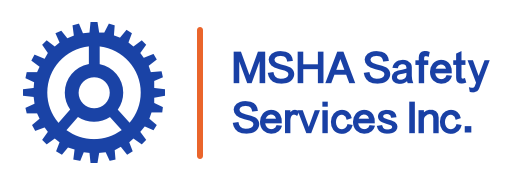The safety of workers in underground mines is a top priority for regulatory agencies, and the Mine Safety and Health Administration (MSHA) plays a crucial role in enforcing regulations to protect miners from hazards associated with ground instability.
One of the key areas MSHA inspectors focus on during their inspections is effective ground control practices. Proper ground control techniques, such as the installation of supports, monitoring for signs of rock movement, and maintaining safe excavation methods, are essential in preventing accidents related to cave-ins and rockfalls.
This article explores the importance of these practices, the role of MSHA inspectors in ensuring compliance, and the measures that mining operations must take to safeguard their workers and maintain a safe working environment.
What is Ground Control in Mining and Why Is It Important?
Ground control refers to the methods used to manage and stabilize the ground around mining operations. It encompasses all strategies employed to prevent rockfalls, landslides, and subsidence that could endanger workers and equipment. The importance of effective ground control practices lies in ensuring the safety of miners, minimizing operational disruptions, and complying with MSHA (Mine Safety and Health Administration) regulations. Failure to implement these practices can lead to accidents, injuries, or fatalities, emphasizing their significance in mining safety protocols.
What Are the Key Indicators of Ground Stability in Mining Operations?
Effective ground stability monitoring involves recognizing signs that indicate potential issues. These key indicators include visible cracks or shifts in rock formations, sudden changes in ground pressure readings, water seepage patterns, and unusual vibrations. Early identification of these warning signs allows mining companies to take preemptive measures to avoid dangerous situations.
How Can Mining Companies Improve Their Ground Control Monitoring Techniques?
Assessment and Planning: Comprehensive assessments, including geological surveys and predictive modeling, form the basis of an effective ground control plan. Companies should focus on site-specific analysis to tailor ground control measures to the unique geological conditions of each operation.
Monitoring and Maintenance: Ongoing monitoring using instruments like extensometers and ground-penetrating radar can detect shifts in rock masses before they become hazardous. Routine maintenance and regular updates to ground control systems help keep the mine environment secure.
Training and Procedures: Training staff on ground control techniques ensures that everyone understands their role in maintaining safety. This includes familiarization with potential hazards and the correct responses to mitigate risks.
Use of Technology: Incorporating advanced technology, such as automated sensors and AI-based analysis, enables more precise and continuous monitoring of ground stability. These tools provide real-time data that can help predict and prevent ground failures.
Regulatory Compliance: Adhering to MSHA standards and guidelines ensures that all ground control measures meet or exceed safety requirements. Regular audits and inspections help maintain compliance and identify areas for improvement.
What Role Does Training Play in Maintaining Effective Ground Control Practices?
Training is crucial for maintaining robust ground control practices. Workers must be educated on identifying hazards, responding to early warning signs, and following established safety protocols. Regular training sessions help keep everyone up-to-date on the latest methods and technologies, fostering a proactive approach to safety.
How Often Should Ground Control Inspections Be Conducted to Ensure Safety?
Ground control inspections should be conducted frequently to ensure safety, ideally before each shift and after significant events like blasting or heavy rainfall. Regular inspections help detect any changes that could compromise stability, allowing teams to address issues promptly.
What Technological Advancements Are Being Used to Enhance Ground Control Measures?
Advances in technology have greatly improved ground control practices. Innovations like real-time monitoring sensors, drones for aerial site surveys, and AI-driven data analysis contribute to better prediction and prevention of ground failures. These technologies provide actionable insights that enable quick decision-making and enhance overall safety.
How Can Data from Previous Incidents Inform Current Ground Control Strategies?
Analyzing data from past incidents allows mining companies to identify trends and learn from previous mistakes. This information can be used to refine current ground control strategies and anticipate potential risks, contributing to a cycle of continuous improvement.
What Are the Best Practices for Conducting Ground Support Evaluations?
Best practices for ground support evaluations include thorough pre-assessment planning, using multiple types of analysis tools (e.g., borehole cameras, rock mass classification), and consulting with geological experts. Documenting the findings and following up with remedial measures as needed ensures comprehensive safety oversight.
How Do Geological Assessments Impact Ground Control Planning?
Geological assessments play a pivotal role in ground control planning by identifying the types of rock and soil present, their stability characteristics, and potential weak points. These assessments help in developing tailored ground control strategies that consider site-specific challenges.
What Are The Common Challenges Faced in Implementing Effective Ground Control Practices?
Common challenges include varying geological conditions, budget constraints, and the integration of new technology. Addressing these challenges requires strategic planning, investment in training, and maintaining flexibility to adapt as new information and technologies become available.

How Can Communication Between Teams Enhance Ground Control Efforts?
Effective communication between engineering, safety, and operations teams ensures that everyone is aligned on ground control priorities and practices. Sharing information about inspections, new findings, and safety measures enhances the overall responsiveness and coordination needed to maintain stability.
Effective Ground Control Practices in Relation to MSHA Inspections
Maintaining effective ground control practices is critical for passing MSHA inspections. Inspectors assess whether mining operations meet required safety standards and whether comprehensive ground control measures are in place. Proactive preparation and adherence to regulations help demonstrate compliance and create a safer work environment for everyone involved.

